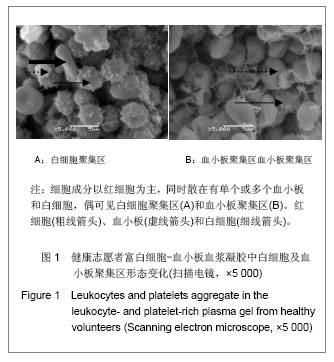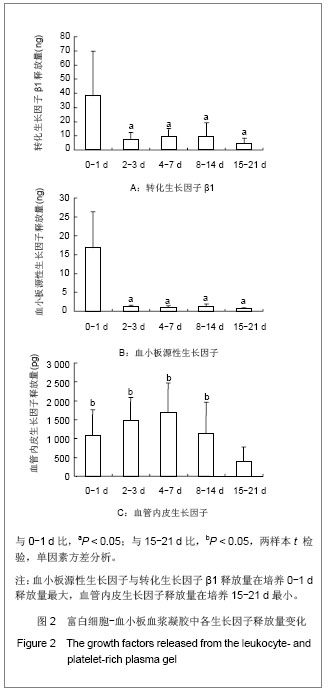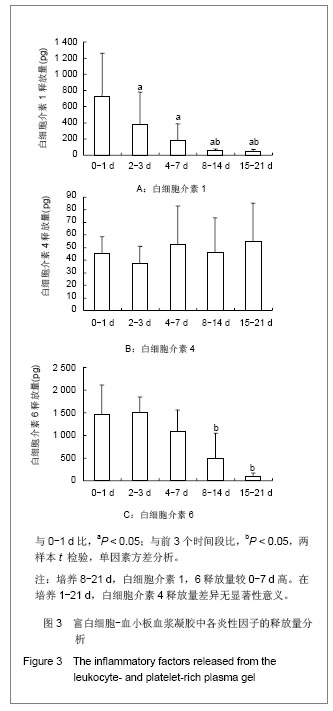| [1]Uggeri J. Dose-dependent effects of platelet gel releasate on activities of human osteoblasts. Periodontol. 2007;78(10): 1985-1991.[2]Lindeboom JA. Influence of the application of platelet-enriched plasma in oral mucosal wound healing. Clin Oral Implants Res. 2007;18(1):133-139.[3]Rozman P, Bolta Z. Use of platelet growth factors in treating wounds and soft-tissue injuries. Acta Dermatovenerol Alp Panonica Adriat. 2007;16(4):156-165.[4]Thor A. Early bone formation in human bone grafts treated with platelet-rich plasma: preliminary histomorphometric results. Oral Maxillofac Surg. 2007;36(12):1164-1171.[5]Everts PA. Autologous platelet gel and fibrin sealant enhance the efficacy of total knee arthroplasty: improved range of motion, decreased length of stay and a reduced incidence of arthrofibrosis. Knee Surg Sports Traumatol Arthrosc. 2007; 15(7):888-894.[6]Gardner MJ, Demetrakopoulos D, Klepchick PR, et al. The efficacy of autologous platelet gel in pain control and blood loss in total knee arthroplasty. An analysis of the haemoglobin, narcotic requirement and range of motion. Int Orthop. 2007; 31(3):309-313.[7]Yuan NB, Long Y, Zhang XX, et al. Sichuan Daxue Xuebao: Yixueban. 2009;40(2):292-294.袁南兵,龙洋,张祥迅,等.自体富血小板凝胶治疗糖尿病难治性皮肤溃疡作用机制的初步探讨[J].四川大学学报:医学版, 2009, 40(2):292-294.[8]Eppley BL, Woodell JE, Higgins J. Platelet quantification and growth factor analysis from platelet-rich plasma: implications for wound healing. Plast Reconstr Surg. 2004;114(6): 1502-1508. [9]Yuan NB, Wang C, Wang Y, et al. Zhongguo Xiufu Chongjian Waike Zazhi. 2008;22(4):468-471.袁南兵,王椿,王艳,等.自体富血小板凝胶的制备及其生长因子分析[J].中国修复重建外科杂志,2008,22(4):468-471.[10]Bielecki TM, Gazdzik TS, Arendt J, et al. Antibacterial effect of autologous platelet gel enriched with growth factors and other active substances: an in vitro study. J Bone Joint Surg Br. 2007; 89(3):417-420.[11]Moojen DJ, Everts PA, Schure RM, et al. Antimicrobial activity of platelet-leukocyte gel against Staphylococcus aureus. J Orthop Res. 2008;26(3):404-410.[12]National People's Congress of the People's Republic of China. Blood Donation Law of the People's Republic of China.1997.[13]State Council of the People's Republic of China. Administrative Regulations on Medical Institution. 1994-09-01.[14]Sonnleitner D, Huemer P, Sullivan DY. A simplified technique for producing platelet-rich plasma and platelet concentrate for intraoral bone grafting techniques: a technical note. Int J Oral Maxillofac Implants. 2000;15(6):879-882.[15]Weibrich G. Comparison of platelet, leukocyte, and growth factor levels in point-of-care platelet-enriched plasma, prepared using a modified Curasan kit, with preparations received from a local blood bank. Clin Oral Implants Res. 2003;14(3):357-362.[16]Mazzucco L. Platelet-rich plasma and platelet gel preparation using Plateltex. Vox Sang. 2008;94(3):202-208.[17]Conaway JE. New trends in analytical technology and methods for pesticide residue analysis. J Assoc Off Anal Chem. 1991;74(5):715-717.[18]Wei D, Huang ZH, Zhao YP, et al. Anhui Nongye Kexue. 2009,37(6):2357-2358.魏东,黄智鸿,赵月平,等.浅析ELISA的基本原理与注意事项[J].安徽农业科学,2009,37(6):2357-2358.[19]Ehrenfest D M D, Del Corso M, Diss A, et al. Three-dimensional architecture and cell composition of a Choukroun's platelet-rich fibrin clot and membrane. J Periodontol. 2010;81(4):546-555.[20]Ma J, Li F, Ren DJ, et al. Zhongguo Kangfu Lilun yu Shijian. 2011;17(3):223-225.马健,李放,任大江,等.富含血小板血浆凝胶的超微结构[J].中国康复理论与实践,2011,17(3):223-225.[21]He L, Lin Y, Hu X, et al. A comparative study of platelet-rich fibrin (PRF) and platelet-rich plasma (PRP) on the effect of proliferation and differentiation of rat osteoblasts in vitro. Oral Surg Oral Med Oral Pathol Oral Radiol Endod. 2009;108(5): 707-713.[22]Lee TH, Seng S, Li H, et al. Integrin regulation by vascular endothelial growth factor in human brain microvascular endothelial cells: role of alpha6beta1 integrin in angiogenesis. J Biol Chem. 2006;281(52):40450-40460.[23]Ferrara N. Role of vascular endothelial growth factor in regulation of physiological angiogenesis. Am J Physiol Cell Physiol. 2001;280(6):C1358-1366.[24]Tiong A, Freedman SB. Gene therapy for cardiovascular disease: the potential of VEGF. Curr Opin Mol Ther. 2004; 6(2):151-159.[25]Zou ZZ, Li JC. Beijing: People's Medical Publishing House. 2008. 邹仲之,李继承.组织学与胚胎学[M].北京:人民卫生出版社, 2008.[26]Dohan ED, Bielecki T, Jimbo R, et al. Do the fibrin architecture and leukocyte content influence the growth factor release of platelet concentrates? An evidence-based answer comparing a pure platelet-rich plasma (P-PRP) gel and a leukocyte- and platelet-rich fibrin (L-PRF). Curr Pharm Biotechnol. 2012; 13(7): 1145-1152.[27]Dohan DM, Choukroun J, Diss A, et al. Platelet-rich fibrin (PRF): a second-generation platelet concentrate. Part III: leucocyte activation: a new feature for platelet concentrates? Oral Surg Oral Med Oral Pathol Oral Radiol Endod. 2006; 101(3):e51-55.[28]Yang YZ, Liu HC, Liu GJ, et al. Zhongguo Xiufu Chongjian Waike Zazhi. 2010;24(5):571-576.杨阎峙,刘衡川,刘关键,等.健康志愿者自体富血小板凝胶体外抑菌作用研究[J].中国修复重建外科杂志,2010,24(5):571-576.[29]Pan LH. Yixue Zongshu. 2005;11(9):775-777.潘灵辉.细胞因子平衡在炎症反应中作用的研究进展[J].医学综述,2005,11(9):775-777.[30]Park WY, Goodman RB, Steinberg KP, et al. Cytokine balance in the lungs of patients with acute respiratory distress syndrome. Am J Respir Crit Care Med. 2001;164(10 Pt 1): 1896-1903. |




.jpg)